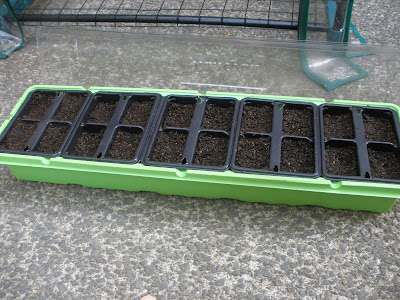Banisteriopsis Caapi
This Contains MAOI alkaloids as well as DMT, It is common constituent of Ayahuasca.

Calea Zacatechichi (Dream Herb)
Extracts of this plant increase reaction times and the frequency and recollection of dreams.

Diplopterys Cabrerana
It is rich in tryptamines such as DMT and 5-MeO-DMT. It is found in the Amazonian lowlands of Brazil, Colombia, Ecuador and Peru.

Erythroxylum Novogranatense
The cocaine content in leaves of E.coca var.coca was found to range from 0.23-0.96%, with a mean of 0.63%.
.jpg)
Catha Edulis (Khat)
Khat contains the alkaloid called cathinone, an amphetamine-like stimulant which is said to cause excitement, loss of appetite and euphoria. Khat is a slow-growing shrub or tree that grows to between 1.5 metres and 20 metres tall. It appears to have originated in East Africa

Mimosa Tenuiflora
Mimosa Tenuiflora is a perennial evergreen tree or shrub native to the northeastern region of Brazil.
The root bark has been recently shown to have a DMT (Dimethyltryptamine) content of about 1%.

Peganum Harmala (Syrian Rue)
This is a plant of the family Nitrariaceae, native from the eastern Mediterranean region east to India.
The active alkaloids of Harmal seeds are the MAOI-A (monoamine oxidase inhibitor A).
The stems of the plant contain about 0.36% alkaloids, the leaves about 0.52%, and the roots up to 2.5%.

Pelecyphora Aselliformis (Peyotillo)
Used by Native Americans as Peyote substitute. Found growing in Central Mexico.
Plant contains traces of mescaline (minute quantities) as well as anhalidine; anhaladine, hordenine; N-methyl-mescaline; pellotine etc. Most of which are found in Peyote in much larger quantities.

Psychotria Viridis
This is a slow growing shrub from the coffee family, Rubiaceae.
It contains DMT 0.1-0.61% dried mass (high). It is known primarily as a principle admixture to the ayahuasca brew used in South America.

Tabernanthe Iboga
This is a perennial rainforest shrub, native to western Central Africa.
Contains indole alkaloids, most notably ibogaine.

Zornia latifolia
This is a perennial herb. Prostate growth habit and intense branching. It is known to have psychoactive effects, similar to Cannabis.

Ariocarpus Fissuratus- Peyote Substitute
This is a species of extremely slow growing cacti found in rare numbers in Mexico and the southern United States.
Ariocarpus fissuratus is a unique species in that is has been used by Native American tribes as a mind altering substance, usually only as a substitute for peyote [1]. While it does not contain mescaline like many other North American cactus species (such as Lophophora williamsii or Peyote), it has been found to contain other mind altering substances, such as N-methyltyramine and Hordenine[1], albeit in doses too small to be active. This cactus is also commonly referred to as the "False Peyote," or simply "Sunami."

Coryphantha Macromeris (Donana)
A cactus from Northern Mexico. Found to contain various alkaloids as well as Phenethylaminre, a drug said to have 1/5th the potency of Mescaline. The alkaloids are in low quantities and must be extracted to be experienced.

Argyreia nervosa (Hawaiian Baby Woodrose)
This is a perennial climbing vine, native to the Indian subcontinent and introduced to numerous areas worldwide,
The seeds of the plant can be consumed to produce psychedelic effects. Volumes of seeds consumed often begin at just a few, 5 to 6 being recommended, but experienced users have taken upwards of ten to twenty-five.
Numerous suggestions have been made as to the contents of the seeds and how they produce their effects, with it being the present belief that they contain a potential precursor to LSD, ergine or LSA, (among a series of other ergolines).

Morning Glory
The seeds of many species of morning glory contain ergot alkaloids such as the hallucinogenic ergonovine and ergine or LSA. Seeds of I. tricolor and T. corymbosa (syn. R. corymbosa) are used as psychedelics. The seeds can produce a similar effect to LSD when taken in the hundreds.




























